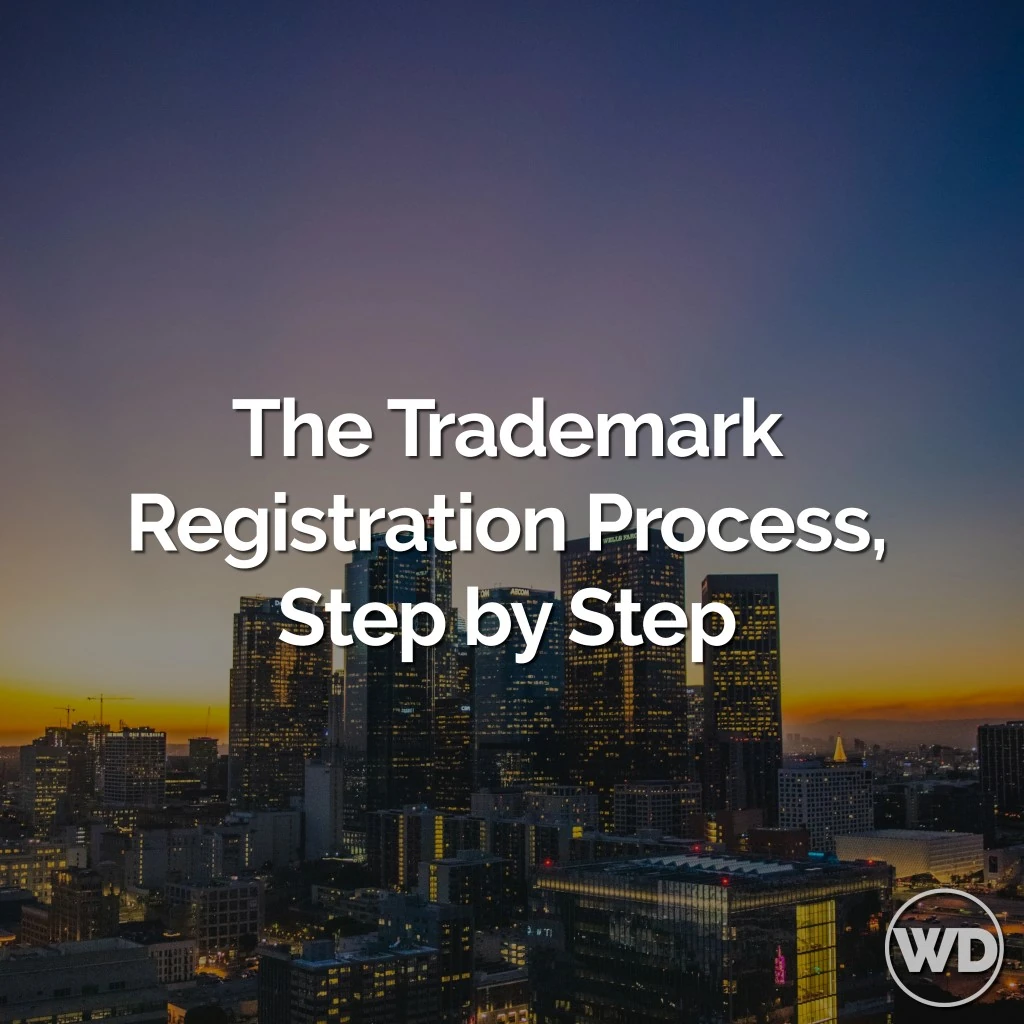In this article:
– Step-by-step guide to registering a trademark in the U.S.
– Common mistakes to avoid during the registration process.
– Timeline and costs associated with trademark registration.
S01-E019
The Trademark Registration Process
Listen to this article as a fast 10-minute podcast.
The Trademark Registration Process: Step-by-Step Guide, Common Mistakes, and Costs
Registering a trademark is an essential step for any business looking to protect its brand. A trademark offers legal protection and exclusive rights, ensuring that your business’s name, logo, or other identifying marks are not used by others without permission. The U.S. trademark registration process can seem complex at first glance, but with careful planning and attention to detail, it can be navigated smoothly. This guide will walk you through the step-by-step process of registering a trademark in the United States, highlight common mistakes to avoid, and explain the associated timeline and costs.
Step-by-Step Guide to Registering a Trademark in the U.S.
Registering a trademark with the United States Patent and Trademark Office (USPTO) involves several stages. Here is a clear step-by-step guide to help you understand the process:
1. Conduct a Trademark Search:
Before applying for a trademark, it’s critical to perform a thorough search to ensure that your desired mark isn’t already in use. The USPTO provides an online tool called the Trademark Electronic Search System (TESS), which allows you to search for registered trademarks that may conflict with yours. It’s essential to check not only for exact matches but also for similar marks that could cause confusion. Failure to do this could lead to rejection or costly legal disputes down the line.
2. Determine the Type of Application:
There are two primary types of applications you can file with the USPTO:
Use in Commerce: If you are already using the trademark in connection with your products or services, you will file a “use in commerce” application. This requires you to provide proof that the trademark is currently being used in the market.
Intent-to-Use: If you have not yet started using the trademark but plan to do so, you will file an “intent-to-use” application. You will later need to submit proof of use before your trademark can be fully registered.
3. Choose the Correct Trademark Class:
When applying for a trademark, you must specify the class of goods or services it will cover. The USPTO uses the Nice Classification system, which groups products and services into 45 different categories (34 for products and 11 for services). It’s essential to select the correct class(es) for your business, as this will determine the scope of your trademark’s protection. You can register your mark in multiple classes, but keep in mind that additional fees apply.
4. Prepare and File the Application:
The next step is to prepare your trademark application, which involves providing detailed information about your mark and the goods or services it represents. The application will require the following key elements:
– A clear representation of the mark you want to register (e.g., a logo, wordmark, or sound).
– A detailed description of the goods or services your trademark will cover.
– The filing basis, whether it is a use in commerce or intent-to-use application.
– Proof of use, such as images or documents showing how the trademark is used in connection with your goods or services (if filing a use in commerce application).
You can file the application online using the Trademark Electronic Application System (TEAS), which offers different filing options depending on your needs. The TEAS Standard form allows greater flexibility, while the TEAS Plus form has stricter requirements but is less expensive.
5. Application Review by the USPTO:
After submitting your application, a USPTO examining attorney will review it to ensure it meets all legal requirements. This review typically takes several months, and the attorney may request additional information or clarification if necessary. If your application meets the requirements, the attorney will approve it for publication.
6. Publication in the Official Gazette:
Once approved, your trademark will be published in the USPTO’s Official Gazette, a weekly publication. This gives the public 30 days to file an opposition if they believe your trademark infringes on their existing rights. If no oppositions are filed, or if any oppositions are resolved in your favor, your trademark will proceed to registration.
7. Final Registration or Notice of Allowance:
If your application is a use in commerce application and no oppositions arise, the USPTO will issue a registration certificate officially granting you trademark rights. If you filed an intent-to-use application, the USPTO will issue a Notice of Allowance, giving you six months to submit proof of use. Once this proof is submitted and accepted, your trademark will be registered.
Common Mistakes to Avoid During the Registration Process
While registering a trademark may seem straightforward, there are several common pitfalls that can delay or jeopardize the success of your application. Avoiding these mistakes can save you time, money, and frustration:
1. Failing to Conduct a Thorough Search:
One of the most common mistakes is skipping or conducting an incomplete trademark search. Many applicants only search for exact matches, ignoring similar marks that could cause confusion. Overlooking similar marks could result in your application being rejected or, worse, legal disputes with other trademark owners.
2. Choosing the Wrong Trademark Class:
Selecting the wrong class for your goods or services can result in limited protection for your trademark. Make sure to carefully review the classification system and seek legal guidance if necessary to ensure your mark is protected in the appropriate categories.
3. Vague or Inaccurate Descriptions:
When describing your goods or services, it’s essential to be clear and specific. Vague descriptions may result in your application being rejected or limit the scope of your protection. Always provide accurate and detailed descriptions to avoid potential problems down the road.
4. Filing Too Early or Without Proper Use:
If you file a use in commerce application without actually using the mark in a bona fide way, your application can be rejected. Make sure to have sufficient proof of use before filing or consider filing an intent-to-use application instead.
5. Not Responding to USPTO Office Actions:
If the USPTO examining attorney issues an office action, which is a request for additional information or clarification, you must respond within the specified deadline (usually six months). Failing to respond to an office action will result in the abandonment of your application.
Timeline and Costs Associated with Trademark Registration
The trademark registration process can take anywhere from 8 to 12 months, depending on various factors such as the complexity of the application and whether any oppositions or office actions arise. Here’s a breakdown of the general timeline:
1. Filing the Application: After submission, the USPTO typically takes around 3 to 4 months to assign an examining attorney to review your application.
2. Office Actions or Approval: If the application requires clarification or amendment, you will receive an office action, which you must respond to within 6 months. If approved, the mark is published in the Official Gazette.
3. Opposition Period: After publication, there is a 30-day window for oppositions.
4. Final Registration or Notice of Allowance: If no oppositions are filed, your mark will proceed to final registration (for use in commerce applications) or you will receive a Notice of Allowance (for intent-to-use applications).
As for costs, the fees associated with trademark registration vary depending on the type of application and the number of classes. Here is a general breakdown of the costs:
– TEAS Plus Application: ~$250 per class of goods or services.
– TEAS Standard Application: ~$350 per class of goods or services.
– Proof of Use Filing (for intent-to-use applications): ~$100 per class.
Additional fees may apply for extensions or legal assistance, so it’s important to budget accordingly.
Trademark Registration Process Conclusion
Registering a trademark is a crucial step in protecting your brand and ensuring its long-term success. By following the step-by-step process, avoiding common mistakes, and understanding the timeline and costs involved, you can navigate the trademark registration process with confidence. Whether you’re registering a logo, a wordmark, or another identifying mark, securing a trademark will safeguard your business’s identity and give you exclusive rights to use your brand in the marketplace.
Use LegalZoom to register your trademark and protect against competitor infringement.





